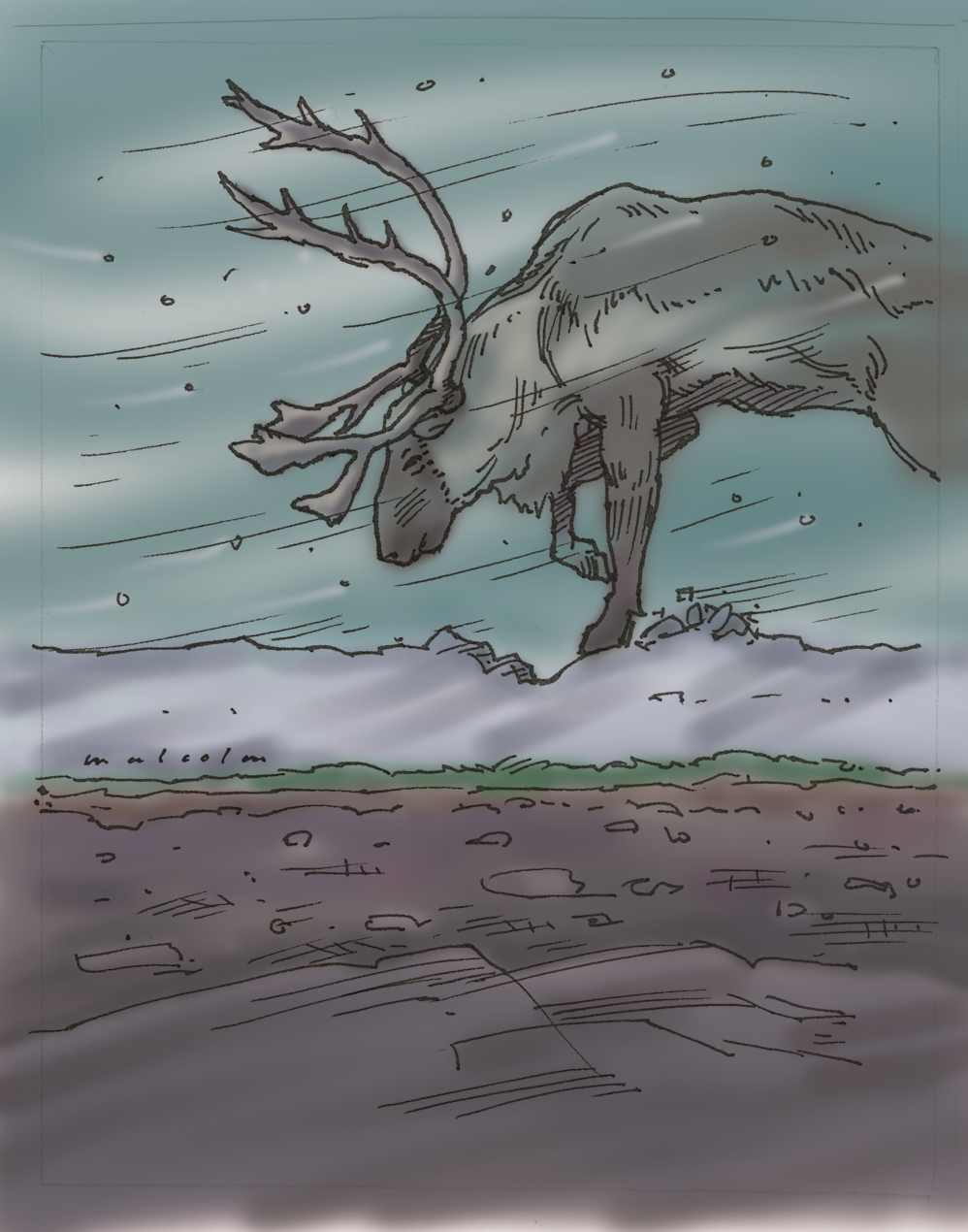Related Links
Scientists predict that one of the areas hardest hit by climate change will be the Arctic. Here, the rate of atmospheric warming is twice as fast as in any other region, and temperatures may rise by as much as 10°C by the end of this century. Nowhere else are the impacts of climate change more noticeable than on Canada's tundra — a vast, treeless plain where the subsoil is permanently frozen and the balance of nature has always teetered between life and death.
A tangled web of interconnected climatic changes is taking place, altering the key habitat components (food, water, shelter, and space) that enable wildlife to survive in one of the bleakest regions on Earth. The result is a feast for some species, a famine for others. Some life forms will adapt to these climatic changes. Others will decline or disappear.
Perhaps the most vulnerable species of all is the Peary caribou. What distinguishes this subspecies from other caribou is its smaller size, paler colour, and narrower antlers, as well as its harsher habitat — the northernmost reaches of Canada's Arctic Archipelago. The Peary caribou has always been prone to drastic population swings resulting from severe weather conditions, and its numbers declined from 24,000 in 1961 to as few as 700 in 2009.
The end may be near for this majestic mammal if warmer weather continues to alter its habitat. For example:

- While a boost in the growth of tundra shrubs means more abundant food, it also means earlier blooming in spring, so caribou arriving on their feeding grounds may find that the plants they need to survive have gone to seed and have become inedible.
- Fast-growing trees, like willow and alder, are rapidly overrunning the tundra. They could shift the timberline northward by up to 300 kilometres in the next century, reducing the tundra by 30 percent and squeezing the Peary caribou into a much smaller space.
- The untimely melting and break-up of sea ice may further reduce the animal's space by preventing its herds from migrating between winter and summer ranges on different islands.
- The melting of permafrost beneath the tundra could cause the collapse of land forms, like eskers and shorelines, important for caribou survival.
Not only is the heat on, but the tap is on too. Climatologists monitoring the Arctic tundra forecast a 30 to 50 percent surge in precipitation in the next 100 years, which could put more pressure on the caribou. For instance:
- While profuse summer showers may increase the amount of food plants and drinking water, they may also result in torrential floods that damage habitat and diminish space.
- Deeper snows may put winter food supplies, mainly mosses and lichens, out of reach and make caribou more vulnerable to wolf attacks.
Copyright Notice
© Canadian Wildlife Federation
All rights reserved. Web site content may be electronically copied or printed for classroom, personal and non-commercial use. All other users must receive written permission.






